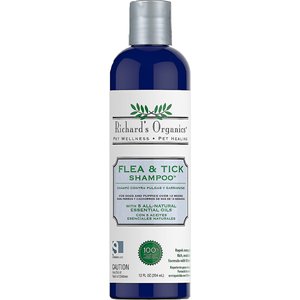Being a South Florida veterinarian, I commonly see pet parents bringing their beloved cats and dogs into the animal hospital in a panic after spotting evidence of fleas or ticks on their pets. Even more commonly, they are often unsure what flea bites look like compared to tick bites, and thus aren’t sure which pesky parasite they are actually seeing on their fur babies. It’s understandable: Although fleas and ticks are completely different species of insects, they do have some similarities, and very commonly get confused.
When it comes to flea vs. tick bites, both wounds are the result of parasites, meaning an organism that lives in or on another organism (a host) and benefits from deriving nutrients at the expense of their host’s blood. Despite both fleas and ticks using your pet as their meals for survival, they bite and feed in different ways and appear different to the naked eye, as do their bites.
So how are pet parents supposed to know if they’re seeing ticks or fleas on dogs or cats? And what are the main differences between flea vs. tick bites?
Let’s break it all down, as well as how you can help keep your pets safe from both of these pesky parasites.
What Do Flea Bites Look Like?
Most flea bites on dogs produce a localized redness with possible swelling, similar to other insect bites.
To the naked eye, adult fleas themselves are visible, about the size of a pinpoint needle. They are wingless insects, black in color, and can jump extraordinarily high and move quickly. In the early stages of infestation, you may not be able to find one, but may see “flea dirt,” which is the common name for flea feces. If small, black speckled “dirt like” material is obvious on the skin of your pet, this is usually a sign that fleas are present. Flea dirt can be easily detected on light colored pets, by parting the fur and looking at the skin, but it may be more difficult to find on pets that have darker pigmentation.
Flea combs, like the Four Paws The Magic Coat Flea & Tick Comb, are small, fine-toothed combs designed to trap flea dirt and fleas, and are an excellent way to see if your pet is infested.
How to Get Rid of Fleas
Always consult your veterinarian if you suspect pests are lurking about. They can determine whether what you’re seeing is truly a flea, and, if so, can ensure your pet is treated properly and help get a monthly preventative in place.
For a more natural treatment, I highly recommend Richard’s Organics Flea & Tick Shampoo. It’s formulated to help kill pests without the use of harsh chemicals—although it’s important to note that this treatment will not keep a flea infestation from reoccurring.
For preventive treatments, flea collars are very effective in preventing fleas and ticks from infecting your pet and keeping infestations under control.
What Do Tick Bites Look Like on Dogs and Cats?
Tick bite symptoms can include a bullseye-like appearance on your pet’s coat and will likely develop a scab or raised lesion, unlike flea bites on cats and dogs.
Ticks are bigger than fleas, being in the arachnid family and a close cousin to spiders. It’s important to note that there are many different species and sizes of ticks, and they can have a lifespan of anywhere between three weeks to three years.
When found on your pet, ticks are generally stationary and feeding, unlike fast-moving fleas. A tick feeds by burrowing or embedding its entire head into the skin of your pet where it becomes attached, drinking up a bloody meal.
How to Get Rid of Ticks
Always contact your veterinarian when ticks or tick bite symptoms are present on your pet. You want to ensure that proper tick bite treatment and a monthly preventative is administered, as ticks can cause some very serious diseases, like Lyme disease.
I always inform my pet parents to practice caution when removing a tick from their dog or cat. If they wish to do so themselves, I recommend wearing gloves and applying rubbing alcohol to the exposed body of the tick. Using steady pressure, pull the tick out with tweezers using a straight motion, making sure not to twist or jerk. Do not squeeze or crush the tick while removing the tick from your pet. After removing the tick, ensure that the head and mouth were both removed. If not, the pet should see their veterinarian to remove what is left in their skin.
If multiple ticks are noted on the pet, speak with a veterinarian to further discuss the removal and treatment of multiple ticks.
Pet parents should make it a priority to get their dogs and cats on the proper flea and tick preventatives if they aren’t already. It’s imperative to their health and well-being. Plus, it will hopefully eliminate the need to spot the difference between flea vs. tick bites—as your pet ideally won’t have either!
If pet parents spot ticks or fleas on dogs or cats, they should always contact their veterinarian immediately. They are your best resource to ensure the health and well-being of your pets.
Read more:
Share:











